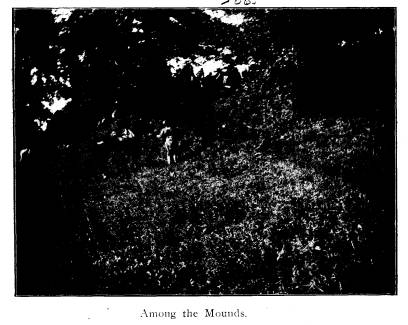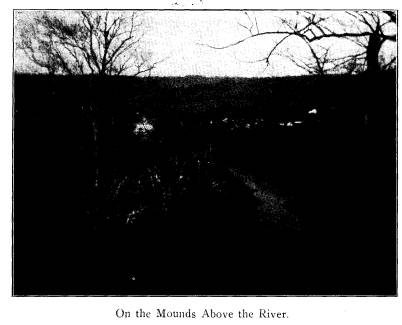Ohio History Journal
|
FORT HILL INDIAN CEMETERY. BY FELIX J. KOCH. Antiquarians and others interested in the lost races of this continent have been delighted, recently, at the news of the dis- covery of still another Indian burial ground on Ft. Hill, at the |
|
|
|
mouth of the Big Miami River, in the very southwest corner of Ohio. Workmen, building a road through the territory, found ar- row-heads and other Indian implements such as to indicate the proximity of a pre-historic cemetery, and, proceeding with care, the great burial-ground was unearthed. The site is not only near several other Indian burial grounds and mounds, but is one al- ready made historic for these earth-works as well. (319) |
|
320 Ohio Arch. and Hist. Society Publications. Ft. Hill derived its name from the fact that even to this time there survives here an ancient fort, erected by the mound- builders. This citadel stands on a high hill which at one time was part of the vast estate of General William Henry Harrison, the President. The fort, however, for one reason or another, has never been well known, possibly because of the difficulty of access even from Cleves, the nearest village. Harrison, himself, described it in 1803 and the description still tallies greatly. The |
|
|
|
hero of Tippecanoe took great interest in these remains, claim- ing for Ft. Hill that as a citadel it was more elevated than the Acropolis at Athens. Technically the large space of ground at the lower end of Ft. Hill was enclosed by walls uniting with the Ohio. A part of the western wall is yet visible. The land enclosed here is about 300 acres. When one thinks of the amount of work necessary, even today, to enclose 300 acres of land with a large embankment, having a solid stone foundation, as this has, and recalls that that |
|
Fort Hill Indian Cemetery. 321 early race had no implements, to speak of, one must marvel at the wonderful energy of the lost race of mound-builders. Great as this work may seem to us, however, it is not to be compared with the fortification on the top of the steep hill over- looking it. Upon the sides of these hills there have grown many great oaks and other trees, covered with mistletoe and moss. The walls can be plainly traced, since, during all these years, the plow-share has not disturbed their form. |
|
|
|
The hill is nearly 250 feet high, the sides are well wooded and rocky, and the summit itself is flat. The rear wall is higher than the other three. It runs in the form of a semi-circle, having a mound of stone at each extremity. The two gateways extend out from this curved wall. They are very narrow, allowing only three men to walk abreast. In front of each gate the earth is levelled off to form a plateau, with a low mound in the center of each. The space enclosed is covered by small trees and shrubbery, in the center of which a small spring is found. Vol. XXII -21. |


